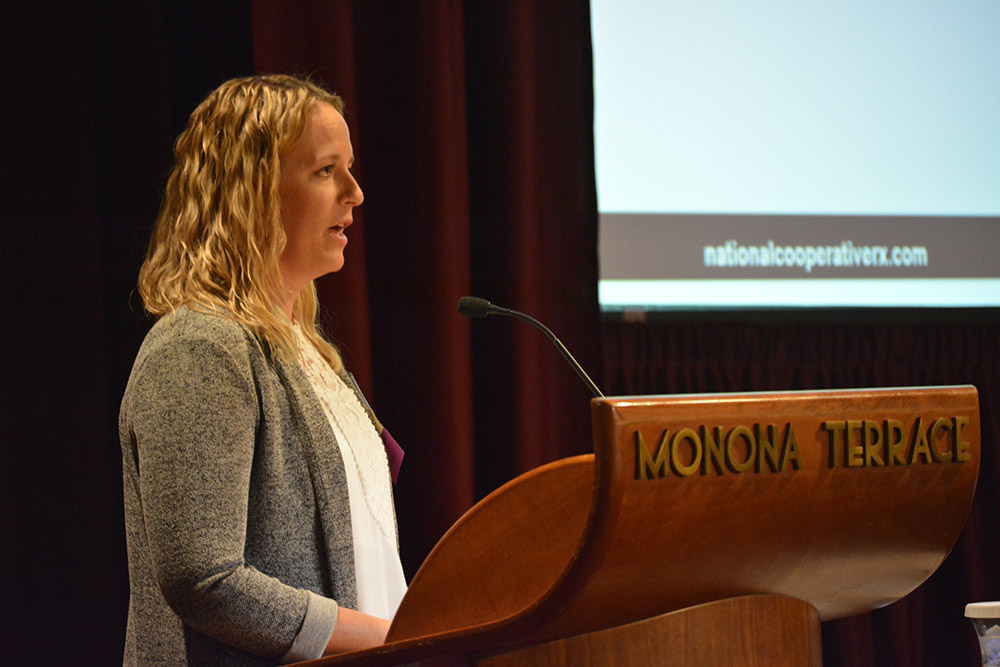
The Opioid Epidemic: What’s an Employer to Do?
The Opioid Epidemic: What’s an employer to do?
“The search for a non-addictive pain-killer has been around since the civil war,” said Dr. Michael Miller, of Rogers Memorial Hospital.
Two medical doctors, a pharmaceutical researcher and a pharmacist were among the speakers invited to share their insights at The Alliance’s Opioid Epidemic Summit, held at the Monona Terrace in Madison, Wis.
Opioids and Pain Management
The panel did agree that prescription opioids are often the best course of treatment for conditions that result in “massive” pain, such as cancer.
However, patients with other chronic conditions have often had success with a more holistic approach to treatment instead of long-term opioid use.
“Chronic pain doesn’t go away. It’s not about removing the pain. It’s about learning how to reduce and learn to function with the pain, said Dr. George Morris, Epilepsy Clinic Medical Director at Ascension. External Link. Opens in new window..
Dr. Christopher Cunningham, assistant professor of Pharmacy Science at Concordia University Wisconsin. External Link. Opens in new window., noted that researchers are currently working on developing new medications that do not fire the reward receptors in the brain that produce dopamine, like opioids do. “This [research] is a lengthy process,” said Cunningham.
Controlled Substances and State Law
Opioids are a class of controlled substances that are governed by state regulation in a closed-loop medication management system. This is an electronic medication management process that connects pharmacists and physicians, called Prescription Drug Monitoring Programs (PDMPs).
Jocelyn Kerl, PharmD., BCPS at National CooperativeRx pointed out the following features of Wisconsin’s PDMPs:
- The database can be used to determine if a patient is obtaining prescriptions at multiple pharmacies.
- Wisconsin shares data with other nearby states. This is useful to see if patients are crossing state lines to obtain multiple prescriptions.
- An interactive public statistic dashboard for the Wisconsin’s PDMPs is available at pdmp.wi.gov. External Link. Opens in new window..
Naloxone Availability and Price
Naloxone is a safe, effective, specific drug used for opioid overdose reversal. It is available as an injection or nasal spray and is available (at selected pharmacies) without a patient-specific prescription.
It is recommended to have on hand for people who could be at risk for an overdose or for people in a position to assist someone at risk of overdose. However without a prescription for naloxone, insurance cannot be billed.
Naloxone is dispensed as a kit. However, there are four different delivery methods available for this drug. Some are brand-name, others are generic. Some are do-it-yourself (DIY) with syringe and vial bottle while others are designed for medically-untrained individuals.
According to a 2018 study by National Cooperative Rx. External Link. Opens in new window., the average price of a naloxone kit ranged from $20 for the DIY kit to $6,150 for an all-in-one module with built-in audio instructions.
“Because of naloxone access, employers may see Pharmacy Benefit Management (PBM) claims go up,” said Kerl.
What Can an Employer Do?
Recommendations offered for employers to consider, included:
- Evaluate your company’s drug policy and consider including prescription medication in your company’s drug testing program.
- Educate employees about the importance of good mental health.
- Revise your pharmacy health benefits to improve access to opioid treatment medications.
- Add non-opioid, complimentary medicine options to your health benefits plan (e.g. chiropractic services, acupuncture, massage, etc.)
- Train supervisors and managers in identifying risky behaviors on the job.
- Have corporate policies in place to create an honest point of discussion about opioid use and abuse.
- Highlight prescription “take back” events at local police departments.
- Consider an onsite workplace naloxone kit.
- Join your employer voices together to advocate for more research to find new, non-opioid, pain-relieving medications.
The experts offered their opinions and advice at this inaugural all-day event for employers. Each speaker had a different perspective to take on the Opioid Epidemic in America.
But the message that was reinforced by the speakers was a plea to employers to join community efforts in reducing the stigma and to increasing access and support for individuals seeking treatment for substance addictions.







